List of Potential Mentors and Their Projects
Steve Alsup
Potential Project: Prevalence and intensity of parasites on nesting prairie falcons
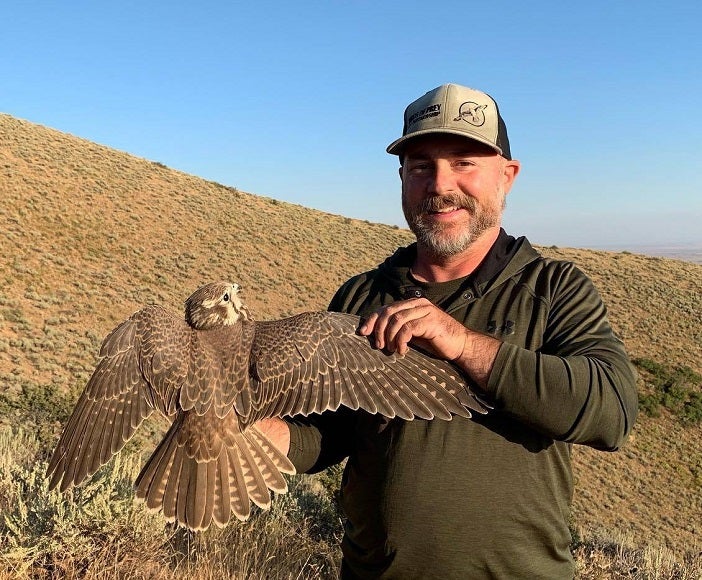
Approximately 5% of the world’s population of prairie falcons is thought to nest in the Morley Nelson Snake River Birds of Prey National Conservation Area. The RRC at Boise State has recently completed an assessment of current abundance, distribution, and nesting success. However, little information is available regarding factors that affect nesting success within the study area. Mexican chicken bugs (Haematosiphon inodorus) inhabit the cliffs of the Snake River Canyon and are hypothesized to cause nest failure in prairie falcons and golden eagles. REU-RR students will document and quantify the prevalence and intensity of Mexican chicken bugs in prairie falcon scrapes, measure characteristics of scrapes, and ultimately assess factors contributing to parasitism in raptors.
Dr. David Anderson & Michael Henderson
Potential Project: Climate change effects on raptors in the arctic
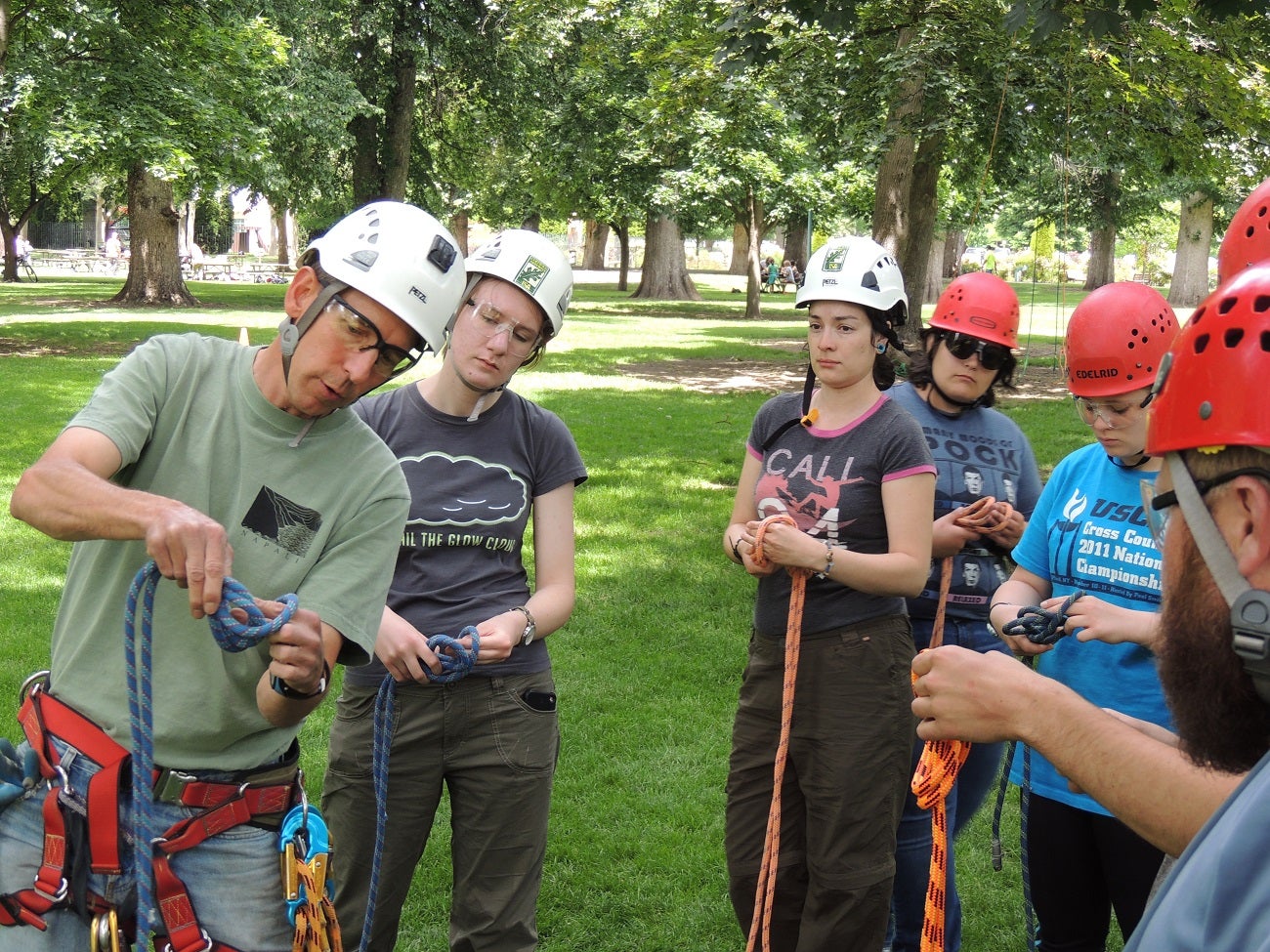
Climate change is happening faster in the arctic than anywhere else, reconfiguring the biotic landscape with unpredictable consequences for wildlife. We study raptors in the arctic to understand behavior or life history attributes that may promote either resiliency or vulnerability to changing landscapes. We focus comparatively on three species that differ in migratory and dietary strategies. Gyrfalcons (Falco rusticolus) are arctic residents, facultative ptarmigan specialists, and are among the most threatened bird species to climate change. Rough-legged hawks (Buteo lagopus) are migratory and specialize on small mammals, whereas golden eagles migrate but have a generalized diet. We use observations and nest cameras to collect data on prey at nests in relation to environmental factors and conduct a variety of field survey methods to estimate prey density. REU-RR students will help formulate and test hypotheses to understand how climate change affects top predators in an arctic setting in comparison to temperate zone counterparts.
Dr. Jim Belthoff
Potential Project: Roadway mortality of barn owls (Tyto alba)
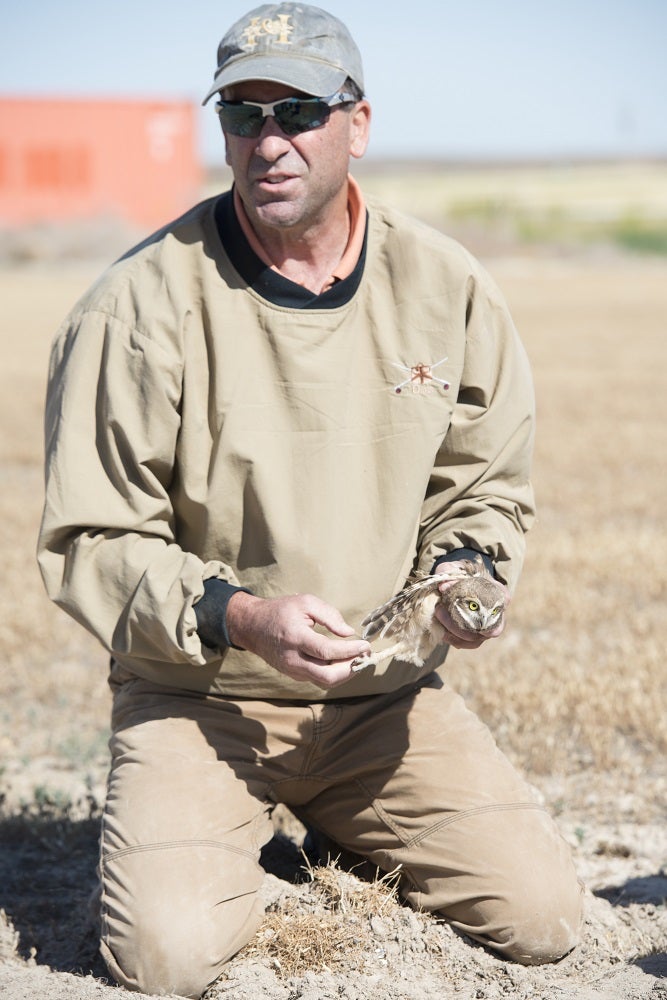
Thousands of barn owls die annually from wildlife-vehicle collisions and in S. Idaho we have documented the highest worldwide roadway mortality rates of owls. Previous research has focused on deciphering factors contributing to the high rates. One notable aspect is that road mortality is female-biased in almost all regions where barn owl road mortality has been detailed. Why are females killed more than males? Using GPS tagged owls, REU-RR students will test the hypothesis that females range more widely than males or cross more roads during nightly movements. Higher female mortality also may result from, or result in, female-biased sex ratios, so REU-RR students will analyze nestling sex ratios. Other REU-RR students will focus on plumage variation in barn owls, especially in relation to understanding patterns of nestling plumage that differ between nestling males and females. Subsequent research will investigate possible ultimate aspects (function) of dimorphic plumage in nestling barn owls and genetic underpinnings or ontogenetic mechanisms giving rise to dimorphic nestlings. Projects focused on burrowing owl ecology and demography and behavior in western screech owls are also possible.
Dr. Jay Carlisle
Potential Project: Human recreation and raptor communities
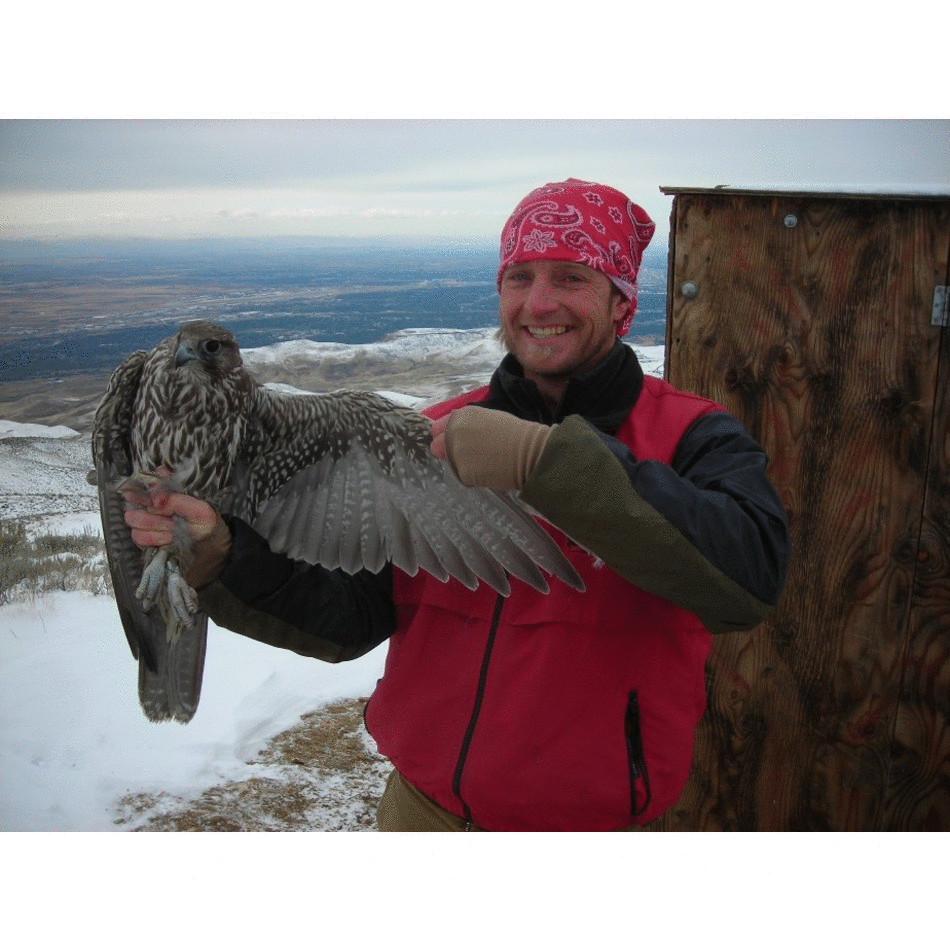
Outdoor recreation of many types is increasingly popular, especially in western states like Idaho. And southwestern Idaho has one of the fastest-growing human populations in the U.S., which often causes environmental conflicts in the urban-rural interface. My lab addresses the extent to which recreation affects birds of prey in shrub steppe and forest ecosystems, with the objective of identifying how best to balance growing numbers of recreationists with high-quality habitats to sustain raptor populations. REU-RR students will gain field experience and draw from published literature to design research questions in these systems.
Dr. Jen Cruz
Potential Project: Bottom-up effects of habitat composition and changes on predator-prey dynamics
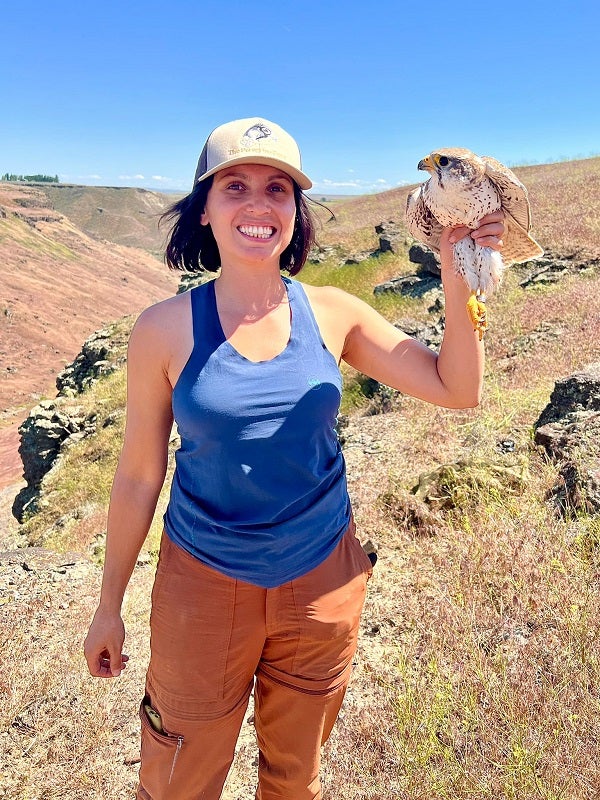
Conservation efforts have not been able to keep up with species loses and declines, which are continuing at accelerated rates in the current Anthropocene era. Habitat loss and modification continue to be the main culprits of species and population losses. However, linking declines to habitat changes is not easy because animal species often display significant lags in their demographic responses to environmental change. Despite these challenges, recent studies have suggested that several animal communities worldwide are facing extinction debts, where current communities are expected to decline in species number because of historical habitat changes. Restoration aims to reverse these trends with the assumption that if habitat is restored, animals will return; but this is seldom assessed. REU participants will evaluate how long-term changes in habitat and current habitat composition influence population abundance for Piute ground squirrels (Urocitellus mollis), and foraging behavior for their main predator, prairie falcons (Falco mexicanus), in the Morley Nelson Snake River Birds of Prey National Conservation Area. REU-RR students will contribute to ground squirrel surveys, prairie falcon nest observations, and diet assessments. They will tackle related research questions including optimizing prey survey protocols, breeding estimates for prairie falcons, breeding seasonality, nesting productivity, and diet.
Dr. Stephanie Galla
Potential Project: Conservation genetics of raptors
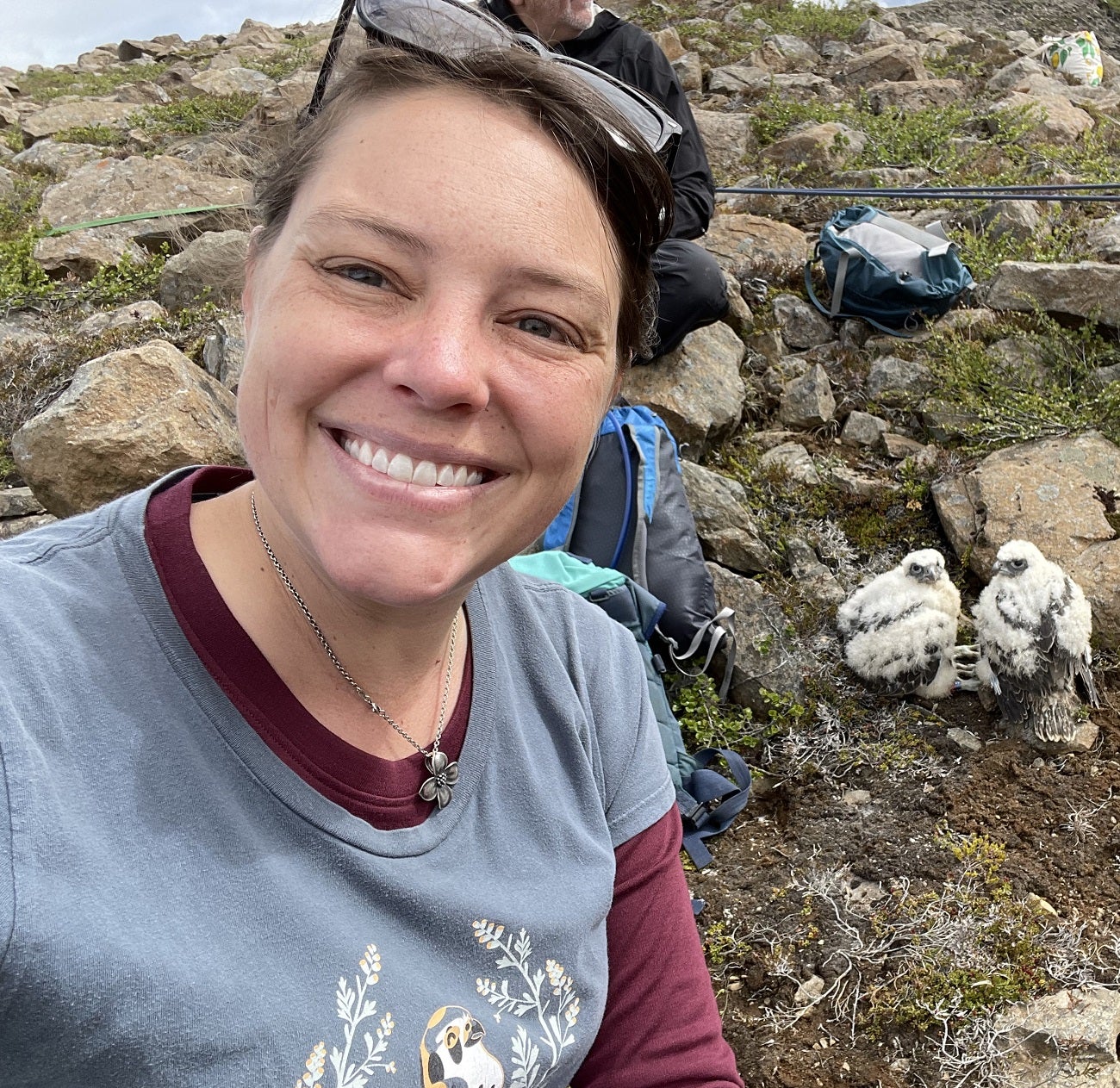
The Conservation Genetics Lab at Boise State (led by Dr. Galla) uses DNA to better understand diversity, demographics, and conservation management of birds in a changing world. With a changing climate, arctic environments are being exposed to novel pathogens as terrestrial herbivores expand north. REU-RR students will aim to assess the genetic diversity of one raptor species that is susceptible to disease, the gyrfalcon (Falco rusticolus). REU-RR students will help understand immune competence of gyrfalcons through characterization of the diversity of gyrfalcons at immune genes in populations in Alaska, Iceland, and elsewhere (samples in hand and from collaborators), and characterize the diversity at immune genes between gyrfalcons and a closely related species, peregrine falcon. Through this work, we will have a better understanding of the adaptive capacity of these arctic raptors toward novel pathogens. REU-RR researchers will gain laboratory skills (e.g., DNA extraction, PCR, DNA sequencing) along with the bioinformatic approaches needed to explore molecular data.
Dr. Julie Heath
Potential Project: Mechanisms underlying phenological responses to climate change

Changes in phenology (the timing of annual cycle events) are one of the most predominant and consequential responses to climate change, but mechanisms that facilitate or constrain phenology shifts remain poorly understood. We explore potential genetic and ecological mechanisms underlying phenology changes in American kestrels (Falco sparverius) that have advanced their egg-laying dates by ~3 wks over the past 30 years. Potential REU projects include: 1) examining carry-over effects of migration strategy on the timing of egg-laying, 2) exploring changes in allele frequencies in clock-linked genes associated with circannual rhythms, and 3) elucidating effects of mismatch on nestling survival and health. Our American kestrel study system has more than 30 years of data to inspire students and inform research. Students also have the opportunity to work with collaborators with expertise in stable isotope analysis, genetics, and evolution.
Greg Kaltenecker
Potential Project: Water management effects on the foraging ecology of ospreys in reservoir systems

My research interests include raptor migration, ecology, conservation biology, foraging ecology, and global change. I work with habitat restoration of key bird habitats along the Boise River system, which flows from three upstream reservoirs. I mentor REU-RR participants focused on the reproduction and foraging ecology of ospreys (Pandion haliaetus) – a sentinel species in managed reservoir systems. We focus on foraging ecology in relation to nest locations, species composition of diet, prey delivery rates, and competition or kleptoparasitism with bald eagles (Haliaeetus leucocephalus). Artificial nest platforms allow us to mark nestlings, gather blood and feather samples, and measure morphology. REU-RR students will help develop hypothesis-driven study questions related to osprey foraging ecology, collect field data using observation and video, conduct geospatial analyses, and institute molecular approaches (DNA from bill swabs) to understand dynamics of nestling diets in relation to water management with the US Bureau of Reclamation, which manages the reservoirs.
Dr. Todd Katzner & Dr. Sharon Poessel
Potential Project: Raptor interactions with renewable energy development
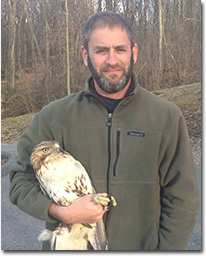
Thousands of raptors die every year from collisions with wind turbines. Our work focuses on understanding avian flight behavior to predict risks to birds from wind energy development. Our team uses GPS data collected from telemetered birds – golden eagles, bald eagles, California condors, ferruginous hawks, and others – to compare the flight altitude responses of raptors to terrain and energy development to map risk to birds. REU-RR participants will test hypotheses they help develop by mapping GPS data, linking them to topographic position as estimated from digital elevation models, measuring flight altitude above ground level, and using a set of statistical analyses to understand flight altitude response to different topographic position and energy development categories.
Dr. Chris McClure
Potential Project: Scoping reviews of the world’s raptors
Scoping reviews systematically collate and summarize literature on a species of raptor. These reviews aid literature searches and highlight knowledge gaps, thus hastening scientific progress and informing conservation efforts. There is much research and conservation targeted at the species level, therefore ornithology and bird conservation benefit from scoping reviews of individual species. REU-RR students will perform scoping reviews of raptor species, develop and test hypotheses about geospatial or other aspects of the species, and help evaluate conservation threats through geospatial analyses. Projects like these will be of interest to students unable or preferring not to conduct field work for their REU project. Information will be incorporated into phylogenetic analyses focused on nestling plumage traits, immunocompetence in raptors, and other related aspects.
Rob Miller
Potential Project: Anthropogenic effects on northern goshawk breeding performance
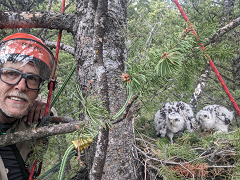
Northern goshawks (Accipiter gentilis) are secretive forest raptors typically used as indicator species by the USDA Forest Service. Breeding rates and productivity in local national forests have declined, and the turnover rate of adults is higher than expected. These come at the same time as increased grazing and resource extraction, anthropogenic disturbance, forest disease, and large wildfires. These factors may influence goshawks directly, or indirectly through prey abundance and the availability of suitable nesting locations. Previous REU-RR students explored genetic structure of goshawk populations, the micro-habitat characteristics of nest stands, effects of weather on breeding, and prey in response to catastrophic wildfire. Current REU-RR students will address the possible influence of grazing practices, human disturbance, and forest diseases on breeding, productivity, and turnover. Students will gather field data and use GIS and statistical modeling to tease apart direct and indirect effects of these factors.